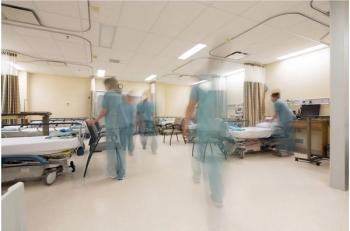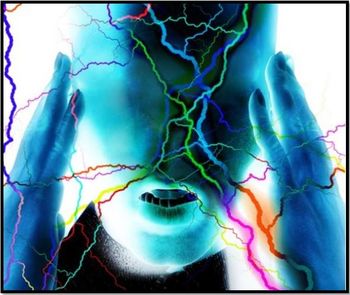
Heart Disease and Syncope
Syncope is defined as a sudden, brief loss of consciousness and postural tone followed by spontaneous complete recovery. It accounts for 3% of emergency department visits and 1% of hospital admissions.
Syncope is defined as a sudden, brief loss of consciousness and postural tone followed by spontaneous complete recovery.1 It accounts for 3% of emergency department visits and 1% of hospital admissions.2 The incidence of syncope rises sharply with age; in persons older than 70 years, the incidence is 2% to 6%.3,4 No cause of syncope is found in up to 33% of patients after evaluation,1 although this percentage has declined in recent years because of the judicious use of newer diagnostic strategies.
Often, the cause of syncope is benign and the condition self-limited; however, syncope may indicate a potentially fatal disorder. The most important risk factor is structural heart disease (eg, coronary artery disease, heart failure resulting from systolic dysfunction, valvular heart disease, or congenital heart disease). Patients with abnormal ECG findings have an increased risk of death within 1 year of the syncopal episode.1,5 Such abnormalities include bifascicular block, QRS duration longer than 0.12 second, Mobitz II second-degree atrioventricular block, preexcited QRS complexes, prolonged QT interval, evidence of Brugada syndrome, or Q waves that suggest previous myocardial infarction (MI). Even if a specific diagnosis cannot be made, it is imperative to evaluate and rule out cardiac causes.
Syncope is most commonly a result of neurally mediated causes (neurocardiogenic or vasovagal syncope). Situational syncope and carotid-sinus syncope are included in this group. Other causes of syncope are cardiac (including arrhythmic and nonarrhythmic), orthostatic, neurologic, and psychiatric factors. A workup that consists of a thorough history taking, focused physical examination, and electrocardiography yields a diagnosis in nearly 50% of cases.5
In this article, we review the basic diagnostic and management principles of syncope.
EVALUATION
A general approach to the patient is reviewed in the Algorithm.
History. Inquire about precipitating factors as well as symptoms before and after syncopal spells (Table 1). A precipitating factor such as postural changes points to an orthostatic cause. Association with micturition indicates a neurocardiogenic cause. Association with head turning suggests carotid-sinus syndrome. Association with exertion is consistent with hemodynamically significant aortic stenosis or hypertrophic obstructive cardiomyopathy (HOCM).
Vasovagal syncope often has a prolonged recovery period, which can help differentiate it from arrhythmic syncope. The presence of an aura suggests seizure. A history of coronary artery disease or repaired congenital heart disease points to a cardiac (arrhythmic) cause.
Carefully review the medication history. Medications such as diuretics, digoxin, antihypertensives, antiarrhythmic agents, antianginal agents, and QT-prolonging drugs can cause syncope. A family history of sudden cardiac death may suggest HOCM or congenital long QT syndrome.
Physical examination. Obtain orthostatic vital signs and perform a careful cardiac examination (Table 2). Patients with vasovagal syncope generally are pale and diaphoretic and have dilated pupils. However, patients with MI can present with similar symptoms; the clinical circumstances will help differentiate between the two. Carotid massage is recommended in all patients who have no known or suspected carotid artery disease (such as carotid bruits or a history of endarterectomy, transient ischemic attack [TIA], or stroke).6 This test is best performed with the patient upright or at an 80-degree head-up tilt with continuous blood pressure monitoring.
ECG. Closely examine the ECG for evidence of conduction system disease, ischemia or infarction, and chamber enlargement, as well as such conditions as long QT syndrome (congenital or acquired) with associated torsade de pointes; right ventricular dysplasia; ventricular tachycardia (VT); Brugada syndrome6; and Wolff-Parkinson-White syndrome, if associated with re-entrant tachycardias or atrial fibrillation with rapid rates (Table 3). Ectopy or bradycardia may indicate a substrate for rhythm disturbances or conduction system disease, although their specificity for arrhythmias that cause syncope is poor.
Further diagnostic testing. There is no role for routine neurologic tests, such as MRI, magnetic resonance angiography, or CT of the head, because of the low yield.
Echocardiography is indicated when the physical examination suggests underlying heart disease. Relevant findings include aortic stenosis; HOCM; segmental wall motion abnormalities attributable to previous MI (substrate for VT); right ventricular dysplasia; intracardiac tumor; mitral valve prolapse (with associated arrhythmias or autonomic nervous system imbalance); and repaired congenital heart disease. If these conditions are documented, expeditious treatment is mandatory.
Although echocardiography is performed in nearly two thirds of patients admitted for unexplained syncope, its role in the evaluation has been controversial, especially given the use of resources and the cost involved. Evidence has emerged, however, that echocardiography is useful in uncovering abnormalities relevant to syncope in nearly 30% of careful- ly selected patients.7 As a result, echocardiography is now advised for patients with syncope who have a history of cardiac abnormality; abnormal ECG findings; or syncope unexplained by orthostasis, electrocardiography, history, or physical examination.5
In susceptible persons, tilt-table testing provokes vasovagal syncope with a specificity of 90%.1 It is indicated for patients with recurrent syncope as well as for high-risk patients (that is, those at risk for injury if they faint) with a single syncopal episode and no evidence of structural cardiovascular disease. Tilt-table testing is also useful in patients with structural heart disease in whom other causes of syncope have been excluded by appropriate testing.
Implantable loop recorders have up to 2 years' worth of ECG recording capability and storage of cardiac rhythms. The device is programmed to store in memory the previous 2 to 5 minutes and subsequent 60 seconds of a patient's cardiac rhythm after automatic or patient-triggered activation, which yields high symptom-ECG correlation.8 In patients with otherwise unexplained syncope, implantable loop recorders identify a rhythm disturbance in 50% after 1 year and in nearly 80% after 2 years.9 Consider referral for implantation of a loop recorder in patients with no obvious cause for syncope or in whom tilt-table testing results are negative.
Implantable loop recorders do not record other potentially important parameters, such as blood pressure (BP). Furthermore, the need for surgical implantation may be unattractive to some patients, despite the fact that the procedure can be done in the office and carries little risk.
Other monitoring. The diagnostic yield with Holter monitoring is less than 2%. Event monitoring is not used in a patient with syncope because the patient has to trigger the recording.
MANAGEMENT PRINCIPLES
The management of syncope is tailored to the cause. Not all patients who faint require treatment. For instance, a patient with an isolated vasovagal episode that resulted from an obvious precipitating factor does not require treatment.
Neurocardiogenic syncope. Recurrent neurocardiogenic syncopal spells require medical intervention. Educate patients to avoid precipitating factors, including extreme heat, dehydration, alcohol, and vasodilators. Instruct them to lie down at the onset of prodromal symptoms. Isometric contractions of the arm, leg, and gluteal muscles may abort syncopal episodes by augmenting venous return. Another strategy includes increasing fluid intake in the morning, followed by sufficient fluid during the day to keep the urine clear.10 Pharmacologic therapy is indicated in patients with sudden, recurrent, and unpredictable episodes of syncope, especially for those in occupations that put them at risk for injury during syncope. α-Agonists (including midodrine) and selective serotonin reuptake inhibitors (including paroxetine) are the most effective agents for treating neurocardiogenic syncope. In a recent trial, the authors found no difference between metoprolol and placebo in the treatment of vasovagal syncope.11
Permanent cardiac pacemaker therapy was ineffective in randomized controlled trials of patients with vasovagal syncope,7 although it may have some benefit in selected patients with prolonged bradycardic or asystolic periods. Pacemakers are recommended for patients with cardioinhibitory or mixed-type carotid-sinus hypersensitivity.
Orthostatic syncope. Patients with syncope resulting from orthostasis require aggressive hydration. Consider a workup for possible adrenal insufficiency, although this condition appears to be a rare cause of orthostatic syncope. Orthostatic syncope is much more likely to be associated with autonomic nervous system failure, especially in older patients. Daily supplementation with 120 mmol of sodium (about 7 g of salt) raises both BP and plasma volume; however, there is little evidence for effect on symptoms. Orthostatic training (standing for 10 to 30 minutes against a wall each day) may desensitize patients to the effects of orthostatic stress.12
Carotid-sinus syndrome. Patients with this condition should discontinue drugs that exacerbate bradycardia and hypotension and avoid carotid-sinus pressure (wearing tight collars, shaving). Permanent pacemakers, although not indicated in neurocardiogenic conditions, are effective in the cardioinhibitory form of carotid-sinus syndrome.6 Dual-chamber pacemakers are recommended for all patients whose rhythm is not chronic atrial fibrillation.
Cardiogenic syncope. Implantable cardioverter-defibrillators (ICDs) are indicated for specific forms of cardiogenic syncopal spells. In patients with HOCM, an ICD is recommended for those at high risk for sudden death--that is, those with a family history of syncopeor sudden death, left ventricular hypertrophy exceeding 3 cm,13 or a history of aborted sudden death or nonsustained VT on ambulatory ECG monitoring.14
In syncopal patients with congestive heart failure and a left ventricular ejection fraction of less than 35%, both ICDs and amiodarone have been used to prevent sudden death. However, recent evidence shows that amiodarone has no favorable effect on survival, whereas single-lead, shock-only ICD therapy reduces mortality by 23%.15Most electrophysiologists agree that antitachycardia pacing algorithms are acceptable as well.
Catheter ablation is indicated for the treatment of syncopal supraventricular tachycardias associated with Wolff-Parkinson-White syndrome, atrioventricular nodal or atrioventricular reentry, atrial flutter, and focal or interatrial re-entry atrial tachycardia.16
Treatment of neurologic and psychiatric syncope is beyond the scope of this article.
WHEN TO REFER
Certain patients require evaluation by an electrophysiologist (Table 4). Patients with unexplained syncope and suspected structural heart disease and/or negative results on tilt-table testing and/or abnormal findings on implanted loop recording are best referred to a specialist. The following patients are also candidates for referral:
- Patients with neurocardiogenic syncope that cannot be controlled by avoidance of triggers or by drug treatment or that is associated with prolonged pauses in cardiac rhythm.
- Patients with an arrhythmia identified during evaluation, including VT, bradyarrhythmia resulting from any treatment that cannot be discontinued, and supraventricular tachycardia, especially when associated with Wolff-Parkinson-White conduction.
- Patients with congenital long QT syndrome or Brugada syndrome.
- Athletes with syncope or patients who have syncope during exercise.
- Post-MI patients with associated left ventricular dysfunction, bundle-branch block, or bifascicular block, or a history of supraventricular tachycardia, and those with HOCM or non-ischemic dilated cardiomyopathy.13
- Patients who require an implantable loop recorder.
References:
REFERENCES:
1.
Kapoor WN. Syncope
.
N Engl J Med
. 2000;343: 1856-1862.
2.
Sun BC, Camargo CA Jr. Characteristics and admission patterns of patients presenting with syncope to US emergency departments
,
1992-2000
.
Acad Emerg Med
. 2004;11:1029-1034.
3.
Soteriades ES, Evans JC, Larson MG, et al. Incidence and prognosis of syncope
.
N Engl J Med
. 2002;347:878-885.
4.
Lipsitz LA, Rowe JW. Syncope in an elderly, institutionalised population: prevalence, incidence and associated risk.
Q J Med.
1985;55:45-54.
5.
Linzer M, Yang EH, Estes NA 3rd. Diagnosing syncope, part 1: value of history, physical examination, and electrocardiography. Clinical Efficacy Assessment Project of the American College of Physicians
.
Ann Intern Med.
1997;126:989-996.
6.
Goldschlager N, Epstein AE, Grubb BP, et al; Practice Guidelines Subcommittee, North American Society of Pacing and Electrophysiology. Etiologic considerations in the patient with syncope and an apparently normal heart
.
Arch Intern Med
. 2003; 163:151-162.
7.
Grubb BP. Neurocardiogenic syncope
.
N Engl J Med.
2005;352:1004-1010.
8.
Farwell DJ, Freemantle N, Sulke AN. Use of implantable loop recorders in the diagnosis and management of syncope
.
Eur Heart J.
2004;25: 1257-1263.
9.
Mason PK, Wood MA, Reese DB, et al. Usefulness of implantable loop recorders in office-based practice for evaluation of syncope in patients with and without structural heart disease
.
Am J Cardiol
. 2003;92:1127-1129.
10.
Brignole M, Alboni P, Benditt DG, et al. Guidelines on management (diagnosis and treatment) of syncope--update 2004.
Europace.
2004;6:467-537.
11.
Sheldon R, Connolly S, Rose S, et al. Prevention of Syncope Trial (POST): a randomized, placebo-controlled study of metoprolol in the prevention of vasovagal syncope.
Circulation.
2006;113:1164-1170.
12.
Ector H, Reybrouck T, Heidbuchel H, et al. Tilt training: a new treatment for recurrent neurocardiogenic syncope and severe orthostatic intolerance.
Pacing Clin Electrophysiol.
1998;21(1 pt 2):193-196.
13.
Olivotto I, Gistri R, Petrone P, et al. Maximum left ventricular thickness and risk of sudden death in patients with hypertrophiccardiomyopathy
.
J Am Coll Cardiol.
2003;41:315-321.
14.
Monserrat L, Elliott P, Gimeno J, et al. Non-sustained ventricular tachycardia in hypertrophic cardiomyopathy: an independent marker of sudden death risk in young patients
.
J Am Coll Cardiol.
2003;42:873-879.
15.
Bardy GH, Lee KL, Mark DB, et al; Sudden Cardiac Death in Heart Failure Trial (SCD-HeRT) Investigators. Amiodarone or an implantable cardioverter-defibrillator for congestive heart failure
.
N Engl J Med.
2005;352:225-237.
16.
Grubb B, Olshansky B, eds.
Syncope:
Mechanisms and Management.
2nd ed. Malden, Mass: Blackwell Publishing; 2005:368.
17.
Gregoratos G, Abrams J, Epstein A, et al. ACC/AHA/NASPE 2002 Guideline update for implantation of cardiac pacemakers and antiarrhythmia devices: a report of the American College of Cardiology/American Heart Association Task Force on Practice Guidelines (ACC/AHA/NASPE Committee to Update the 1998 Pacemaker Guidelines).
Circulation.
2002;106:2145-2161.
EVIDENCE-BASED MEDICINE
- Connolly SJ, Sheldon R, Thorpe KE, et al. Pacemaker therapy for prevention of syncope in patients with recurrent severe vasovagal syncope: Second Vasovagal Pacemaker Study (VPS II): a randomized trial. JAMA. 2003;289:2224-2229.
- Kenny RA, Richardson DA, Steen N, et al. Carotid sinus syndrome: a modifiable risk factor for nonaccidental falls in older adults (SAFE PACE). J Am Coll Cardiol. 2001;38:1491-1496.
- Sheldon R, Connolly S, Rose S, et al. Prevention of Syncope Trial (POST): a randomized, placebo-controlled study of metoprolol in the prevention of vasovagal syncope. Circulation. 2006;113:1164-1170.
RELEVANT GUIDELINES:
- AHA/ACCF Scientific statement on the evaluation of syncope. J Am Coll Cardiol. 2006;47:473-484.
- Brignole M, Alboni P, Benditt DG, et al. Guidelines on management (diagnosis and treatment) of syncope--update 2004. Europace. 2004;6:467-537.
Newsletter
Enhance your clinical practice with the Patient Care newsletter, offering the latest evidence-based guidelines, diagnostic insights, and treatment strategies for primary care physicians.




